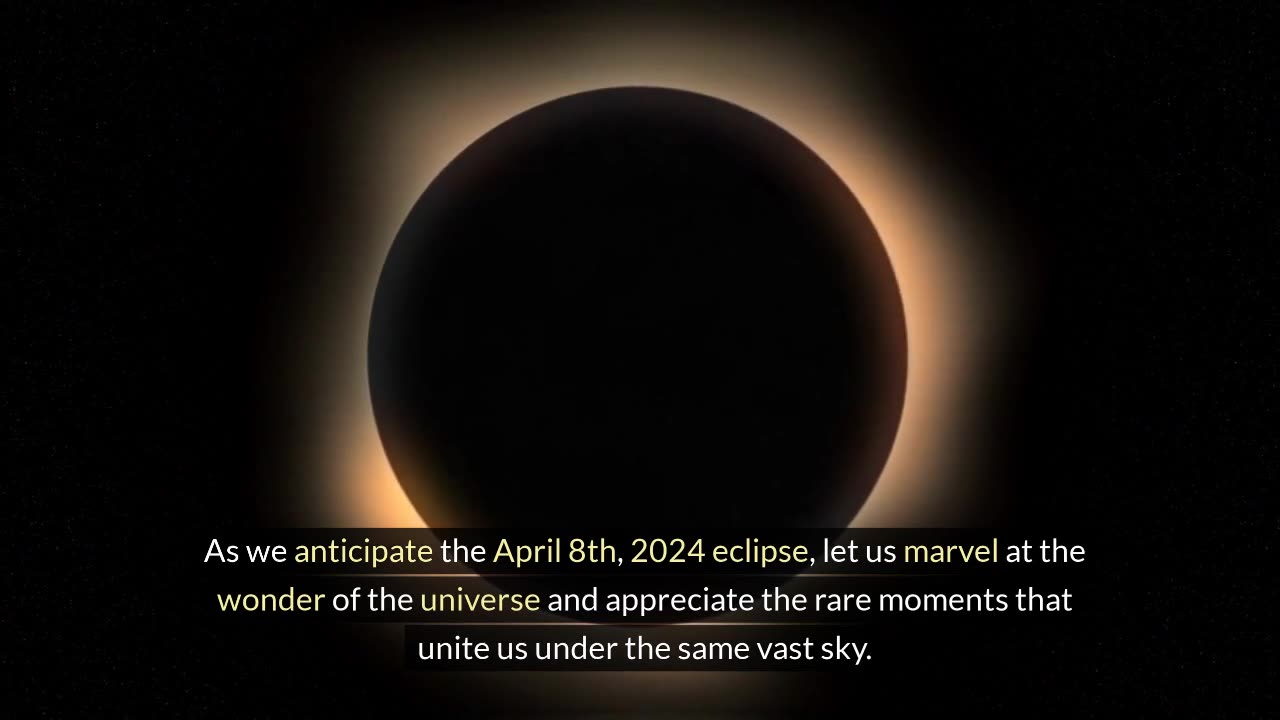Premium Only Content

Total Eclipse vs Partial Eclipse - What's the Difference Anyway??
ECLIPSE MERCH AVAILABLE: https://totaleclipse2024.curatedspot.com/products/bestsellingshirts
Eclipses, those rare cosmic events, offer captivating displays of nature's grandeur. Among them, partial and total eclipses stand out, each offering unique experiences.
During a partial eclipse, the moon partially covers the sun, leading to a subtle dimming of sunlight. It's a reminder of the celestial ballet unfolding above us, showcasing the harmonious interplay of celestial bodies.
In contrast, a total eclipse is unparalleled. As the moon perfectly aligns between the Earth and the sun, it casts a shadow, known as the umbra, onto the Earth's surface. Lucky viewers within this shadow experience totality, witnessing the sun completely obscured by the moon. During this brief but breathtaking moment, the sky darkens to twilight hues, revealing stars and planets usually hidden by the sun's brilliance. Birds may roost, temperatures drop, and an otherworldly stillness envelops the landscape.
The upcoming April 8th, 2024 total eclipse promises to be exceptional. It will traverse a path across North America, offering millions the opportunity to witness totality. Cities like Dallas, Indianapolis, and Buffalo will experience complete obscuration of the sun, providing a rare opportunity for residents and travelers alike. Furthermore, advancements in technology and social media mean that this eclipse will be more accessible and widely observed than ever before.
While both partial and total eclipses offer glimpses into the cosmic dance, the experience of totality is incomparable. As we anticipate the April 8th, 2024 eclipse, let us marvel at the wonder of the universe and appreciate the rare moments that unite us under the same vast sky.
ECLIPSE MERCH AVAILABLE: https://totaleclipse2024.curatedspot.com/products/bestsellingshirts
-
 LIVE
LIVE
TimcastIRL
1 hour agoDOJ Launches FULL INVESTIGATION Into TPUSA Antifa RIOT, Media Says Mostly Peaceful | Timcast IRL
21,278 watching -
 LIVE
LIVE
Glenn Greenwald
4 hours ago"Former" Al-Qaeda Leader Welcomed to the White House; The "New TikTok" Clamps Down on Israel Critics: With Influencer Guy Christensen; Dave Portnoy Decries Cancel Culture, Unless His Group is Under Attack | SYSTEM UPDATE #545
4,194 watching -
 LIVE
LIVE
Barry Cunningham
4 hours agoBREAKING NEWS: SOLVING THE HOUSING CRISIS BY UNDERSTANDING VETERANS DAY! AND IT'S MOVIE NIGHT!
3,675 watching -
 LIVE
LIVE
The White House
1 hour agoAbove, Below & Beyond: A Presidential Special
756 watching -
 UPCOMING
UPCOMING
Sarah Westall
1 hour agoYounger Human Brains are Vastly Different than Older Generations w/ Neurologist Dr Jack McCallum
104 -
 UPCOMING
UPCOMING
megimu32
15 minutes agoON THE SUBJECT: The Movies That Made Millennials — And the Ones That Missed 🎥
-
 18:13
18:13
T-SPLY
3 hours agoChicago Mayor Accuses ICE Of Human Rights Violations!
1416 -
 1:09:47
1:09:47
iCkEdMeL
1 hour ago🔴 Redwood City Standoff Erupts in Gunfire | Police Shooting Update
5.96K2 -
 LIVE
LIVE
LFA TV
23 hours agoLIVE & BREAKING NEWS! | TUESDAY 11/11/25
694 watching -
 30:53
30:53
BonginoReport
7 hours agoMonica Kelsey: The Woman Who Is Saving Countless Babies - Nightly Scroll w/ Hayley Caronia (Ep.175)
90.8K17